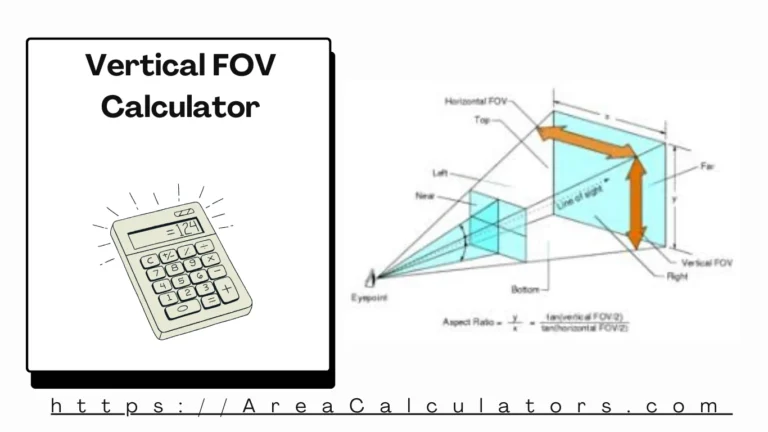Heat is energy, and it moves in more ways than one. Among conduction and convection, radiation is unique—it doesn’t need a medium. It can transmit energy through a vacuum, which is why sunlight reaches Earth. In high-temperature environments or vacuum systems, radiative heat transfer becomes the dominant form of energy exchange. A Radiation Coefficient Calculator is an essential engineering tool that simplifies the process of determining how efficiently heat is transferred via radiation between two surfaces at different temperatures.
What is a Radiation Coefficient Calculator?
Contents
- 1 What is a Radiation Coefficient Calculator?
- 2 Who Uses It and When
- 3 Understanding the Radiation Heat Transfer Coefficient
- 4 Radiation Coefficient Formula
- 5 Input Parameters and Units
- 6 How to Use a Radiation Coefficient Calculator
- 7 Real-World Applications of Radiation Coefficient Calculations
- 8 Top Features to Look For in a Radiation Coefficient Calculator
- 9 Benefits of Using a Radiation Coefficient Calculator
- 10 Limitations and Ideal Conditions for Use
- 11 Radiative vs. Conductive and Convective Heat Transfer
- 12 Advanced Concepts: Gray Body vs. Black Body Radiation
- 13 Tips for Thermal Engineers and Researchers
- 14 Future of Thermal Radiation Analysis and AI Integration
Purpose and Role in Thermal Engineering
A Radiation Coefficient Calculator computes the radiation heat transfer coefficient (h_rad) used to quantify the heat transfer rate due to radiation. This is crucial in thermal systems design, especially when dealing with:
-
High temperatures
-
Vacuum environments
-
Surface emissivity concerns
Who Uses It and When
This tool is widely used by:
-
Mechanical and thermal engineers
-
Aerospace scientists
-
HVAC designers
-
Electronics cooling specialists
Its importance grows when radiation cannot be ignored—typically at temperatures above 400 K.
Understanding the Radiation Heat Transfer Coefficient
Definition and Thermodynamic Significance
The radiation coefficient (h_rad) is a parameter that models the energy emitted via electromagnetic radiation per unit area and temperature difference. It simplifies the complex Stefan–Boltzmann law into a linear form for easy analysis in energy balance equations.
Factors That Influence Radiation Coefficient
-
Surface emissivity (ε): Measures how effectively a surface emits radiation.
-
Temperature difference (T₁, T₂): Must be in Kelvin.
-
Geometric view factor (in detailed models)
-
Stefan–Boltzmann constant (σ): A physical constant used in radiative equations
Radiation Coefficient Formula
q = h_rad × A × (T₁ – T₂)
This simplified linear form is derived from the full Stefan–Boltzmann law:
q = ε × σ × A × (T₁⁴ – T₂⁴)
Where:
-
q = heat transfer (W)
-
ε = emissivity (0 to 1)
-
σ = Stefan–Boltzmann constant (5.67 × 10⁻⁸ W/m²·K⁴)
-
T₁, T₂ = absolute temperatures of surfaces (K)
-
A = surface area (m²)
This helps model the heat transfer for design and simulation purposes.
Input Parameters and Units
Surface Area, Emissivity, and Temperature (K)
-
Surface Area (A): m²
-
Emissivity (ε): unitless, typically 0.1–0.98 depending on material
-
Temperatures: Always in Kelvin (add 273.15 to Celsius)
Stefan–Boltzmann Constant and Its Role
This constant defines the proportionality in the radiation equation. Its consistent value ensures standardized results across calculations.
How to Use a Radiation Coefficient Calculator
Step-by-Step Calculation Process
-
Input surface emissivity
-
Enter surface area (A)
-
Input surface and surrounding temperatures (in Kelvin)
-
Click “Calculate”
-
Review the resulting h_rad and heat transfer (q)
Common Mistakes to Avoid
-
Forgetting to convert Celsius to Kelvin
-
Using incorrect emissivity for materials
-
Assuming radiation is dominant when convection dominates instead
Always verify the operating temperature range and system type.
Real-World Applications of Radiation Coefficient Calculations
In Aerospace and High-Temperature Engineering
-
Spacecraft and satellites rely on radiation for thermal control
-
Rocket nozzles and combustion chambers face intense radiative environments
-
Radiative cooling is vital in re-entry vehicle design
In Electronics, HVAC, and Energy Systems
-
High-performance electronics use radiation analysis for heat sink design
-
HVAC engineers simulate radiant heaters and building envelope losses
-
In power plants, boilers and turbines involve radiative calculations
Top Features to Look For in a Radiation Coefficient Calculator
Accuracy, Unit Flexibility, and Thermal Modeling Support
-
Should support unit conversions
-
Material libraries for emissivity values
-
Graphical tools for radiation vs. temperature plots
Mobile Accessibility and Scientific Tool Integration
-
Mobile apps for field engineers
-
Exportable results for CFD or thermal simulations
-
Can integrate with thermal analysis platforms
Benefits of Using a Radiation Coefficient Calculator
-
Eliminates manual computation errors
-
Speeds up design and validation cycles
-
Offers quick insights for thermal diagnostics
-
Improves simulation accuracy in models
-
Supports sustainability through optimized thermal performance
This tool is critical for safe, efficient, and environmentally sound engineering.
Limitations and Ideal Conditions for Use
-
Most accurate when radiation is dominant
-
Assumes ideal surface behavior (often gray-body)
-
Doesn’t include geometry-based view factors unless specified
-
Less useful for low-temperature systems where conduction/convection dominate
Always pair with comprehensive thermal analysis for complete results.
Radiative vs. Conductive and Convective Heat Transfer
| Mode | Medium Required | Typical Application |
|---|---|---|
| Radiation | None (can occur in vacuum) | Spacecraft, high-temp systems |
| Conduction | Solid contact | Electronics, building walls |
| Convection | Fluid motion | HVAC, automotive cooling |
Radiation becomes dominant when temperatures exceed 400–500 K.
Advanced Concepts: Gray Body vs. Black Body Radiation
-
Black Body: Ideal emitter (ε = 1)
-
Gray Body: Real surface with constant emissivity (ε < 1)
-
Most engineering materials are gray bodies
Calculators help approximate real-world systems using this model.
Tips for Thermal Engineers and Researchers
-
Use validated emissivity tables
-
Confirm steady-state or transient assumptions
-
Combine with convective modeling for hybrid systems
-
Validate results through thermal imaging or sensor data
These best practices ensure accurate thermal control in complex systems.
Future of Thermal Radiation Analysis and AI Integration
In the near future:
-
AI-driven optimization will fine-tune designs for thermal performance
-
Digital twins will simulate full radiative environments in real-time
-
IoT sensors will feed real-time data into mobile radiation calculators
-
Material-specific emissivity AI predictions will simplify inputs
These innovations will revolutionize thermal system design and monitoring.
FAQs:
1. What does a radiation coefficient calculator do?
It calculates the heat transfer rate and coefficient for thermal radiation between two surfaces based on temperature and emissivity.
2. Do I need to convert Celsius to Kelvin?
Yes. Radiation formulas require absolute temperature in Kelvin.
3. What is the Stefan–Boltzmann constant used for?
It defines the proportionality between emitted radiation and temperature in the Stefan–Boltzmann law.
4. Can I use this for low-temperature systems?
Radiation is minor at low temperatures. Use it for high-temperature systems or where conduction/convection are minimal.
5. What if my material isn’t a perfect black body?
Use the gray-body model and input an accurate emissivity value.
6. Are these calculators accurate for design work?
Yes, but for critical systems, validate with simulations or experiments.
Conclusion:
The Radiation Coefficient Calculator is a cornerstone tool for understanding and managing thermal radiation in high-stakes engineering. From aerospace and electronics to HVAC and energy systems, it provides clarity where heat transfer complexity can blur decision-making. With accurate inputs and smart design, engineers can harness the power of thermal radiation to create safer, more efficient, and innovative systems for the future. In 2025 and beyond, this tool will remain indispensable for any professional dealing with heat and energy.





